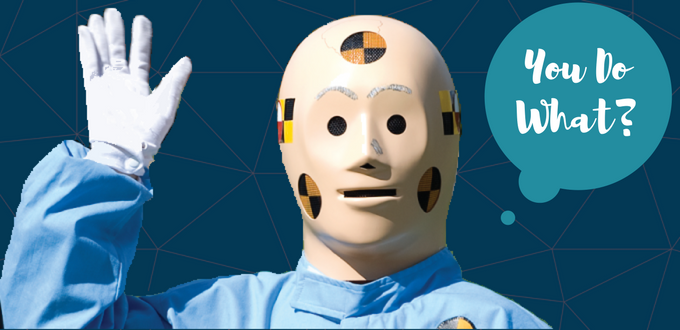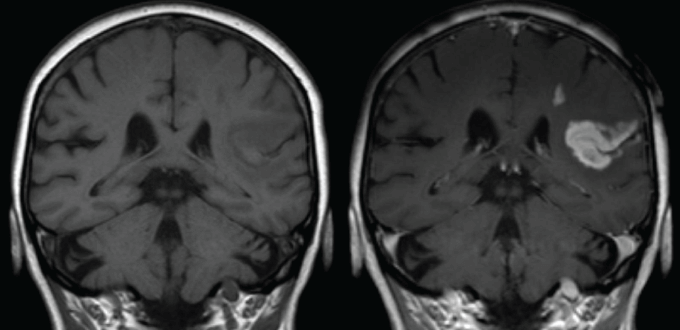It’s a normal part of many conversations, “What do you do?” Sometimes I wish a simple response would suffice, but if I’m being completely honest, I kind of like that my answer leads to a bit more of a discussion. The following is just an overview. I will be going a bit deeper in the future if warranted. For now, I’ll try and keep it light and informal.
The short answer is that I work in Forensics, and I specialize in Biomechanics and Collision Reconstruction. If I say that I get all kinds of reactions, but mostly, no one knows what I’m talking about. A lot of times it’s, “Oh, OK. How about this weather?” That’s fair enough because unless you’re in Law Enforcement or part of the Legal and/or Insurance industries, Forensics probably isn’t part of your life. No, binge watching Dexter or CSI doesn’t count. I love what I do though, and I’m always eager to talk about it. So, I usually don’t even bother with the generic response anymore, I’d way rather explain.
The long answer is that I get called when there is an accident and there are questions about what happened, how and why it occurred, and if things could have been different. Because my background is in Mechanical Engineering and Biomechanics, I’m usually involved in reconstructing motor vehicle accidents or assessing human injury. A lot of times my analysis turns into a report which can be used to make decisions about liability (i.e. fault) and/or damages (i.e. compensation). And yeah, sometimes this work brings me into courtrooms, where I can take the stand as an expert witness.
When it comes to reconstructing collisions (i.e. Collision Reconstruction), we rely on physical evidence and fundamental concepts of engineering and physics, to essentially turn back the clock on an accident. The aftermath of a collision – damaged vehicles, strewn debris, splintered telephone poles, broken street signs, skid marks, and fluid trails – looks like utter chaos to most. But to a reconstructionist, these are clues; they are the pieces of the puzzle and can be used to help answer the question of, “What Happened?”
First-hand observations, whether of the collision site or the involved vehicles, are a crucial part of these investigations. In a perfect world, we would get called right away and get out to the scene while everything is still there. Our jobs would be ALOT easier if this were always the case because the more evidence we have, the more definitive we can be about our analysis and findings. Unfortunately, we often don’t get called in to investigate for months and even years after the collision. By that time skid marks are gone, debris has been cleared, and the vehicles have long since been removed from the scene.
No matter what though, we always want to see as much of the evidence as possible, wherever it may be. I’ve examined vehicles in the middle of farm fields where the grass was so high you wouldn’t know anything was there. I’ve crawled under cars in oil and fuel soaked gravel ‘driveways’ on more than one occasion. Inspecting a half-assembled, partially repaired vehicle in a shop is a fairly normal occurrence. No longer in Canada or the Mid-West, I won’t miss shoveling snow off junkyard vehicles in mid-February. Sometimes the vehicles are simply gone or have already been repaired, and we need to rely on photographs or repair estimates. Roadways get redone, vehicles disappear, and evidence fades. Ultimately, we do the best we can with what is available.
These challenges are just inherent to the job and by no means are they insurmountable. Each piece of evidence is accounted for and analyzed. Whether it’s a gouge in the roadway or a flattened area of grass, it’s all part of the story and helps us to understand what happened. Vehicle damage is compared to that sustained during controlled crash tests where we know how fast the cars were going and what they struck. Computer models are created and dozens and sometimes hundreds of simulations are performed until a result is obtained that is consistent with the physical evidence. We can then make determinations about factors such as area of impact, collision severity, and pre-impact motion. These findings enable us to answer the questions that lie at the heart of most reconstructions: How fast were they going? Was it avoidable?
To change gears a bit…wow, apologies for the bad pun. As a Forensic Biomechanist, my primary role is to assess whether a causal relationship exists between an incident and an injury. “Huh?” Alright first, Biomechanics is the study of how the human body responds to force and motion. In other words, it’s like engineering, but instead of buildings and bridges, Biomechanists study the human body – what it is made of, how it works together, and how and why it fails. No, I’m not a Physician. I’ve never had any formal training in the identification and/or treatment of injury so I can’t say whether or not someone is injured. My background and experience allow me to understand how people move and how injuries occur, not how to fix them. How much force does it take to break a bone? How much friction does a floor need to provide? What does it take to tear a ligament? Is that a tripping hazard? What is a concussion and when are they sustained? Basically, everything up to and including the injury or incident, that’s my wheelhouse. The aftermath, not so much.
When it comes to Forensics, Biomechanists like me are ideally suited to talk about whether the circumstances of an incident are consistent with an injury. To us, every injury tells a story and provides information about what happened. This can be particularly useful when the circumstances are unknown, if memory fails, or if witnesses or injured parties are no longer available. Sometimes we are asked to determine if an event, like a fender bender, was sufficient to cause injury. Other times we are asked to assess whether a helmet would have prevented a head injury, or if a seatbelt would have affected the outcome. Many of my cases don’t involve car accidents at all and instead revolve around other ways that personal injuries can be sustained from slips, trips, and falls to recreational incidents and beyond. Bottom line is that a Biomechanist can provide insight any time an injury is sustained or reported.
These assessments require detailed analysis of the incident as well as a thorough understanding of the individual, including their medical history and any predisposing factors that may be relevant. The ultimate goal is to quantify the incident and determine what kinds of force and motion the individual was actually exposed to as opposed to what may have been said or heard or some other subjective information. The final step is to assess whether the exposure of that incident was sufficient to cause injury to this particular individual.
How do we do that? Well, the reality is that we as humans have been studying our motion, and that of animals, for centuries. Leonardo da Vinci, circa mid-1400s, gets a lot of credit but he was hardly the first to study Biomechanics. Interest in form and function naturally lead to further inquiry and understanding of injuries. Anecdotal reports, animal testing, experimenting with cadavers, volunteer studies, and research with anthropometric devices (i.e. dummies) have all contributed to what is a very large body of work. It is a constantly expanding and evolving body of research that myself and other Biomechanists are always contributing to, challenging, and relying upon.
I can’t speak for all Forensic Biomechanists, but my role, as I see it, is to participate in and understand this research to the extent that I am able to effectively communicate it to any and all audiences. I don’t like to think of it as my opinion, it is more so a translation of the science that is relevant to the issue at hand. So, when I’m asked if a floor is slippery, I’m not providing my personal thoughts and feelings on the subject; I’m explaining how my specific observations and measurements of slip resistance relate to the work of others in the field who have been studying these topics for much longer than my 35 years. Honesty and integrity are absolutely paramount, there is no place for ego in this work. As a guy that I have quite a bit of confidence once said, “If I have seen a little further it is by standing on the shoulders of Giants.” (Isaac Newton 1676). With this in mind, I rest humbly, and comfortably.
Well, I think that about sums it up. Beyond explaining what I do and how I do it, I hope the passion I have for this work comes through as well. It’s not easy and it certainly isn’t for everyone, but I find it extremely satisfying. It is ever changing, and each file presents its own challenges. I get to wear multiple hats and be both a scientist and a teacher on a regular basis. To me, getting the right answer is just the start, making sure everyone understands is the goal.


About The Author
Michael Sinnott
My background is in Biomechanics and Engineering. I work in Forensics, so I'm the guy that gets called to figure out what happened and why. I own BioLogic Forensics LLC, and offer forensic services out of Oahu, Hawaii. I love what I do and am passionate about people. Work related or not, I'm always investigating something. Whether I'm working or surfing or diving or fishing, I'm proud to share my stories. After all, I'm just a kid from suburban Detroit living out his dreams in Hawaii!